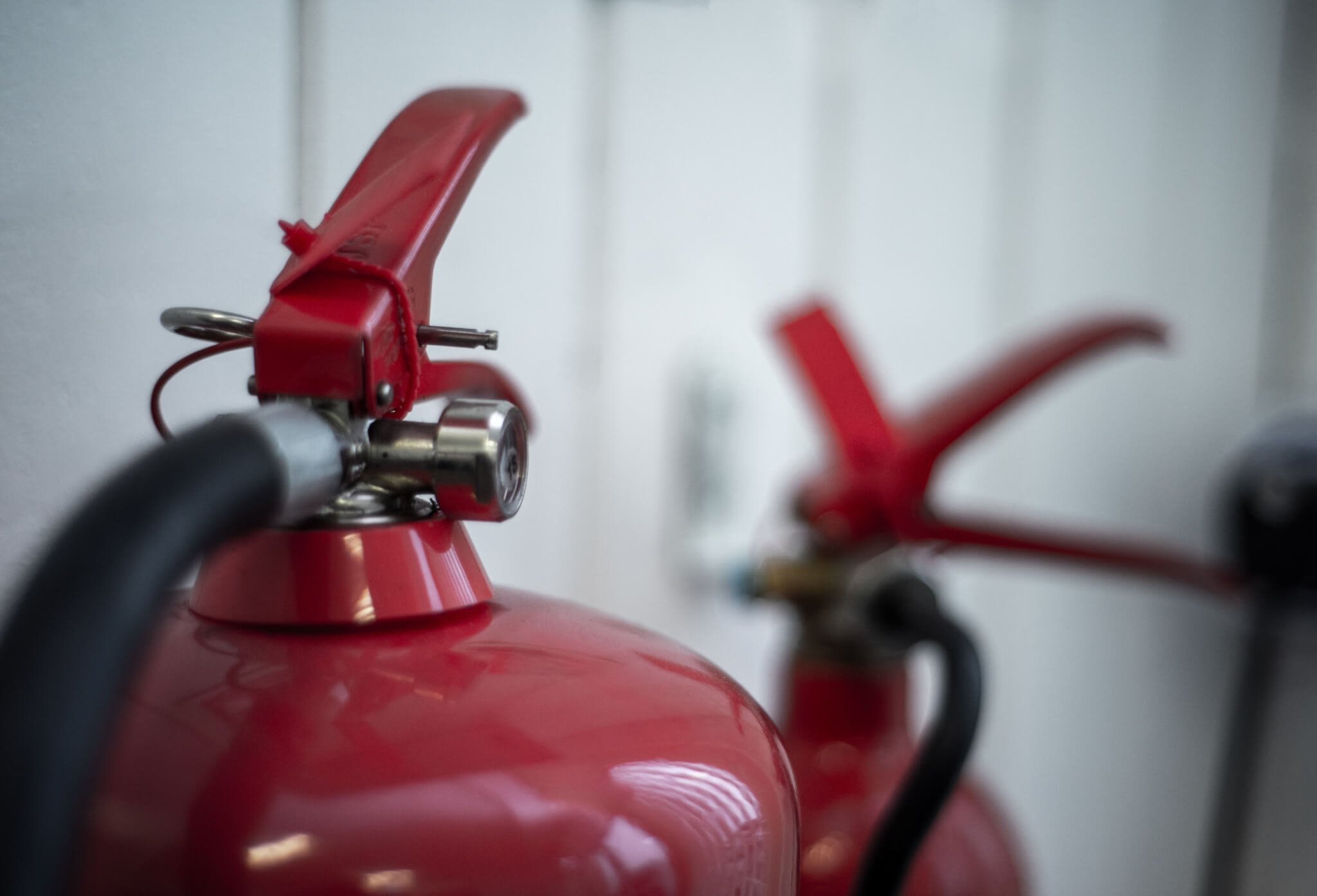Porter Fire provide and maintain a complete range of fire extinguishers for use on all types of fires.

Potentially the most recognisable form of fire safety equipment, fire extinguishers usually represent the first line of defence in the event of a fire. Our knowledgeable team can ensure that you are prepared for any fire eventuality.
Porter Fire provide a full-service package to ensure that your fire extinguishers remain in full working order and are legally compliant. We can also deliver training so that your staff know how to use them when the situation arises.
There are nearly 20,000 commercial fires in the UK each year, demonstrating the importance of taking fire prevention measures in business premises.
All fire safety legislation in England and Wales for non-domestic premises is covered by the Regulatory Reform (Fire Safety) Order 2005 (RRO), which states that appropriate fire-fighting equipment, including portable fire extinguishers, must be provided where there is any risk of fire.
The RRO states that business owners and managers as designated Responsible Persons (RP) are responsible for carrying out a fire safety risk assessment and implementing and maintaining a fire management plan.
Since the law is not prescriptive in many areas, the risk assessment is crucial, and applies to all businesses, however small. RPs should ensure staff are trained in extinguisher location and correct use, and hold fire drills and evacuation procedures. Failure to protect staff by providing appropriate equipment could lead to prosecution and refusal of insurance pay-outs, apart from injury and loss of life.
The provision and maintenance of fire extinguishers is also covered by BS5306, which gives guidelines as to which extinguishers to use where and on what type of fire, but also allows an element of choice.
Read: Types of fire extinguisher: How to choose the right class
Currently, materials present in the area to be protected from fire in the UK can be divided into 6 categories of fire involving different substances:
It is very important that the right type for the risk, the business and the location are supplied. The following types of extinguishers can be used to quench the various types of fire:
The regulations state that a minimum of two Class A fire extinguishers on every floor of a building are needed, unless the premises are very small, in which case one may be acceptable. Three- or six-litre foam, or nine-litre water, are the most frequently found types, although others are likely to be needed as well, most commonly CO2 extinguishers for electrical fires.
All premises with electrical equipment (which covers most premises) must have at least 2kg CO2 extinguishers, 5kg if there is 415-Volt rated equipment.
The number required depends on the size of the area to be protected and whether the business is classed as low or high risk. As a basic rule of thumb, the floor area in square metres should be divided by 200 and rounded up to calculate how many nine-litre water or equivalent extinguishers are necessary.
If there is a sprinkler or automatic suppression system in place, fewer fire extinguishers may be required.
Fire extinguishers must be accessible and visible. Water-based and CO2 fire extinguishers should be located by exits and fire alarm call-points to encourage people to move away from the fire.
The 30-metre rule is useful – in a low risk workplace an employee should be within 30 metres of an appropriate extinguisher on any given level of the premises, meaning that the devices can be sited 60m apart.
Specialist extinguishers, such as dry powder for Class C fires in areas such as boiler rooms and wet chemical extinguishers for kitchens (Class F), should be positioned within easy reach of, but not too near, the specific fire hazard, eg the boiler or the deep fat fryer. CO2 extinguishers should be placed within server or plant rooms.
Extinguishers should either be fixed by brackets to the wall, or, if very heavy, attached to a rigid floor stand to discourage people from moving them. Heavier extinguishers should be fixed with the handle at a height of about 1 metre.
If they are not totally obvious, extinguishers must be clearly signposted with ID signs fixed to the stand or wall and directional arrows if necessary. ID signs explain the type of extinguisher and how and when to use them.
If they need to be sited outside, water and foam extinguishers can be purchased that contain an anti-freezing agent.
Fire extinguishers must be commissioned on site by a competent person – usually someone with the BAFE fire extinguisher or equivalent qualification from a third-party-certified fire protection company. This involves a thorough check to ensure they are fit for purpose. A certificate will be issued to prove their compliance with the regulations.
Extinguishers must be maintained in good working order. The RP should carry out monthly visual checks, but they must be serviced annually by a competent person. A basic service should include checking it is in date, hasn’t been tampered with, is in good working order, with correct weight and pressure and has the correct signage and positioning.
Advice should be given on refilling/replacement or any additional extinguishers needed and the service recorded on the service label on the side.
UK fire extinguisher regulations recommend that extinguishers should be replaced or given an extended service/overhaul every 5 years. CO2 extinguishers should be replaced every 10 years, unless they are damaged or have been discharged. No extinguisher must ever be more than 20 years old.
It is also a legal requirement to keep a permanent record of all servicing, maintenance and inspections of fire extinguishers.